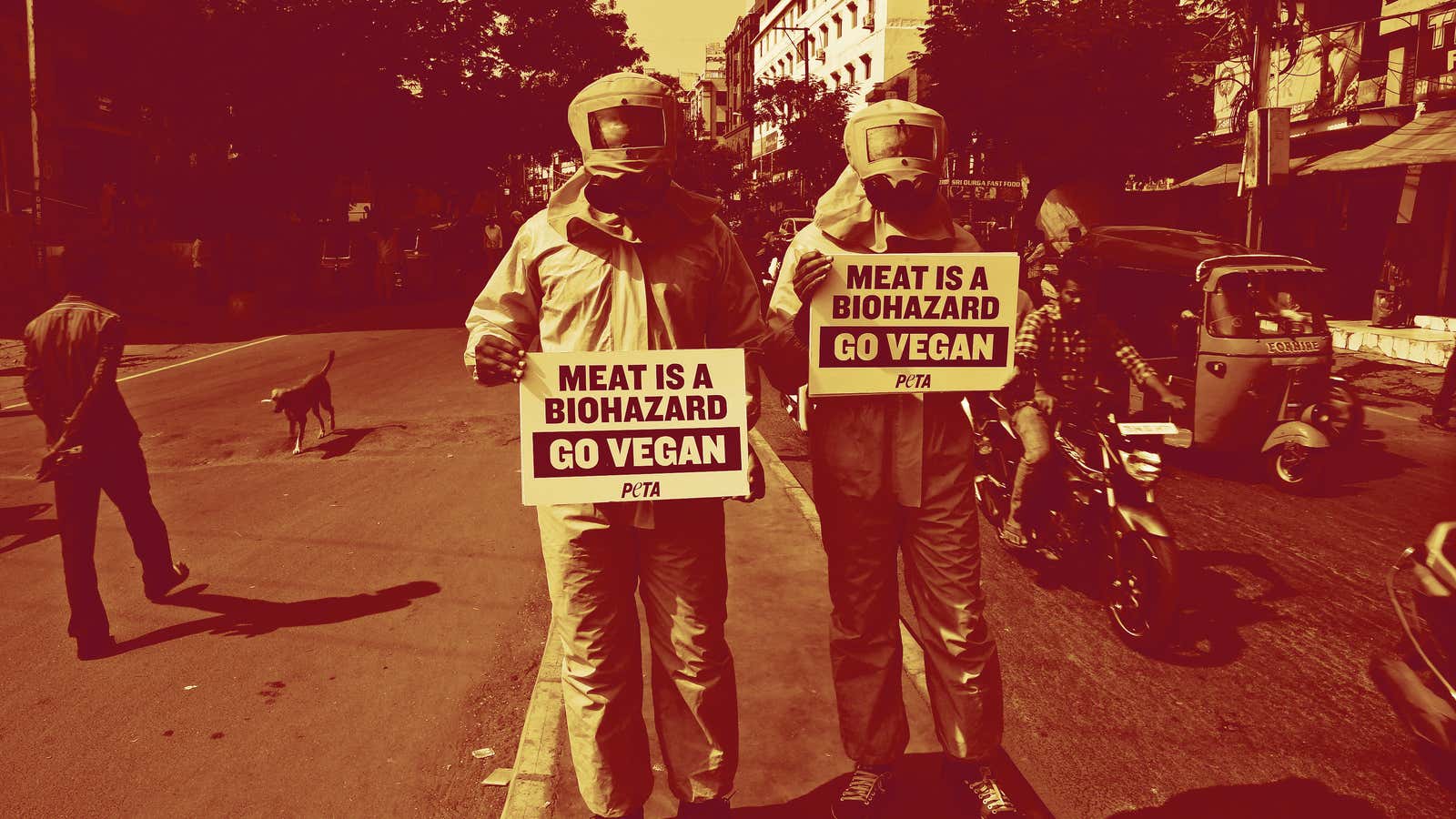Thirty-five years ago, when some friends and I started People for the Ethical Treatment of Animals (PETA), no one had heard of “animal rights.” We didn’t have a campaign strategy. We just knew that we wanted to make a difference for animals—those killed for food and on fur farms and in laboratories and in circuses. We didn’t hesitate. We just jumped right in.
PETA’s first case—the precedent-setting 1981 battle over the Silver Spring monkeys—resulted in the first arrest and criminal conviction of an animal experimenter in the US on charges of cruelty to animals, the first official confiscation of animals abused in a laboratory, and the first US Supreme Court victory for animal test subjects. We haven’t stopped fighting—and winning—in our efforts to end animal cruelty since.
PETA is not a one-issue organization: When anyone or any industry is abusing animals anywhere, we are an equal opportunity critic. In our early days, we reached people by snail mail and telephone. Today, our presence on social media has enjoyed rapid and significant growth. We’ve developed the innovative “I, Orca” and “I, Chicken” wireless Google virtual-reality experiences. And we “work within the system” by purchasing stock in many of the companies we campaign against (so we can submit shareholder proposals). We have affiliate offices in the United Kingdom, India, parts of East Asia, Australia, and Germany, extending our reach worldwide. The Latino community is driving many of our campaigns, PETA Latino’s Spanish-language Facebook posts reach an average of 40 million people every month.
Our guiding philosophy is that silence is a social cause’s worst enemy. Whatever we have to do to break that silence and bring the topic into the arena of public discussion, we will try. Not everyone wants to hear that animals are scalded to death in slaughterhouses; kept in cages so tiny that they can’t even turn around or spread their wings on factory farms; electrocuted and skinned alive for their fur; shocked, poisoned, burned, blinded, cut open and mutilated in laboratories; chained and caged nearly all the time in circuses; and other horrors. But our first priority isn’t human comfort. We’re here to make sure the plight of abused animals goes viral.
In a world with a 140-character attention span, provocative campaigns make the difference between allowing important yet depressing subjects to remain invisible and having them widely seen. The public is more interested in hearing about the Kardashians than about the animals who are cut up in laboratories and classrooms. Experience has taught us that colorful and controversial gimmicks—like stripping to “bare skin rather than wear skin”—grab headlines, bringing a serious message to audiences around the country and, often, even the whole world. When I say something, it may not garner a retweet, but if Paul McCartney or Pamela Anderson says something, people pay attention—whether they like that particular celebrity or not.
We are unapologetically abolitionists: Our goal is for animals to be left in peace to go about their lives. But what many critics (and supporters) of PETA don’t realize is that we’re also pragmatic. We’re willing to work with companies—even the ones we publicly criticize for their treatment of animals. After two years of negotiations with—and more than 400 demonstrations against—McDonald’s worldwide, it became the first fast-food chain to agree to make basic welfare improvements for farmed animals. Within a year, Burger King and Wendy’s followed suit; and within two years, major grocers like Safeway, Kroger, and Albertson’s had also agreed to adopt stricter guidelines in order to improve the lives of animals slaughtered for food. Multiply those small changes by the billions of animals used annually, and that’s a lot of suffering abated.
We persuaded Mobil, Texaco, Pennzoil, Shell, and other oil companies to cover their exhaust stacks to prevent millions of birds and bats from flying into them, becoming trapped, and burning alive. Following our campaign against General Motors’s use of live pigs and ferrets in car-crash tests, all such gruesome and deadly experiments on animals stopped worldwide.
It’s no coincidence that after years of non-stop PETA pressure, Ringling Bros. circus is eliminating its elephant acts. Nor is it happenstance that SeaWorld is fighting to keep its dead business model alive in the face of public condemnation. When PETA was founded, the cosmetics industry insisted that animal tests were indispensable. Today, more than 1,500 companies refuse to test their products on animals, and many forward-thinking scientists are using only sophisticated non-animal methods to study diseases and lifesaving techniques.
PETA is often criticized for being too shocking, too demanding, too “in-your-face,” or too extreme in our methods. We have been blasted for advising children to refuse to dissect frogs, for urging that all pit bulls be sterilized; for euthanizing old, sick, or aggressive dogs and cats turned away from “no kill” shelters; and, of course, for taking our clothes off. But we are envelope pushers with a serious mission: We aren’t here to win a popularity contest, or to reiterate what’s already understood. For us, it’s do or die for the animals, and, bit by bit, society is changing, not us. When PETA began, people thought a vegan was someone who lived in Las Vegas, today, almost everyone either knows or is one.
Things change when people take action. “Someone” needs to find a home for the abandoned dog; collect the evidence to help prosecute the boys who burned a cat; show the video of elephants being beaten behind the circus stage; offer alternatives to ham and chicken; comfort the cow who has been kicked in the face; protest when test monkeys go insane inside their tiny cages; call the media when the horse collapses while hauling a carriage; petition against dogfights, bullfights and fur farms; and push companies to implement modern, humane testing methods. I hope one of those “someones” will be you; another will always be PETA.
